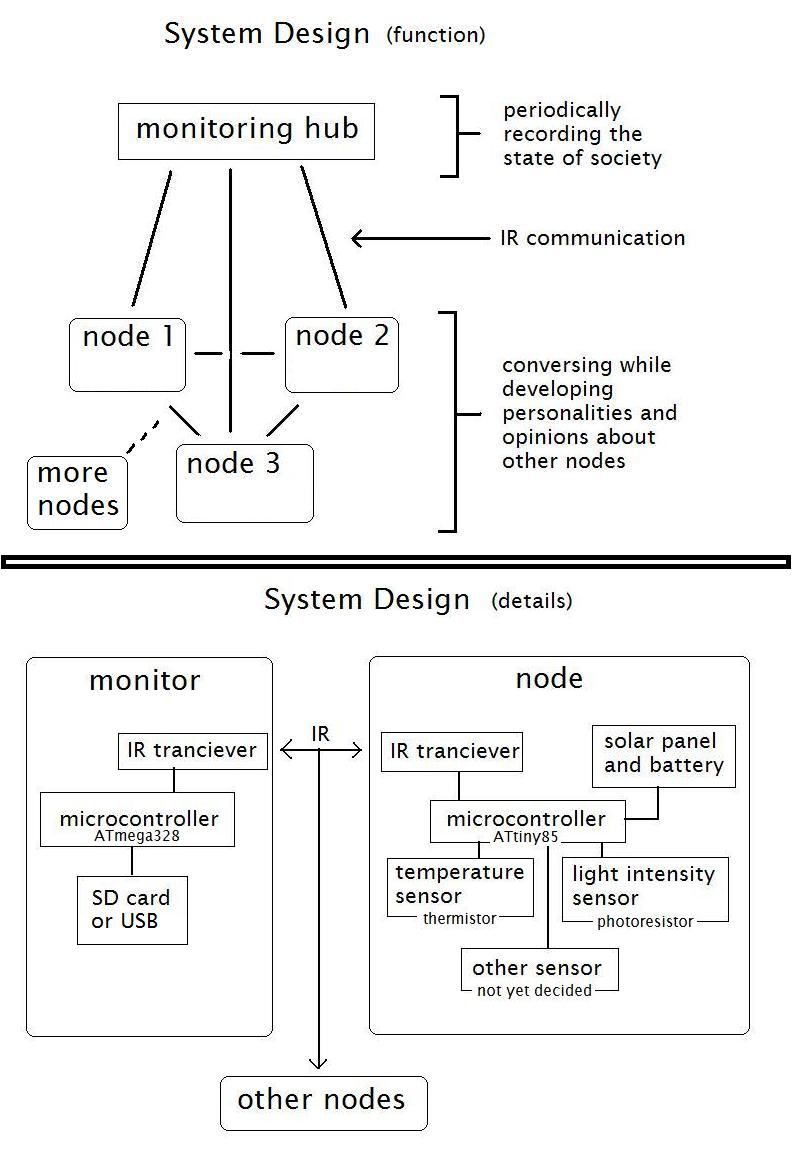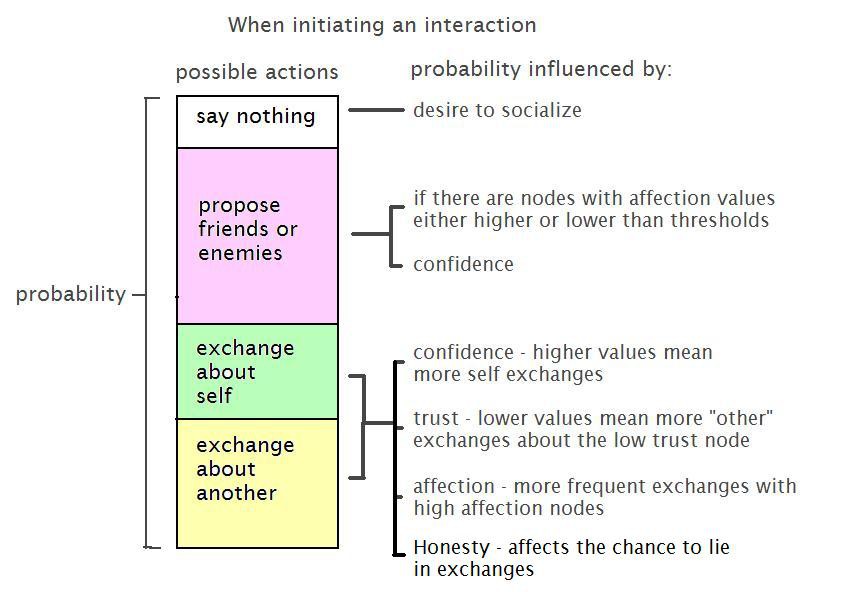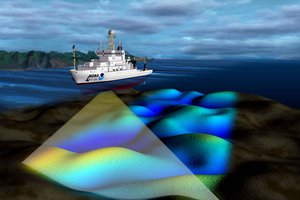If the picture frames, lamps, clocks and other things around your room could converse with each other, what do you think would happen? They might form opinions about other items in the room. They might form social groups. There may be bullying or romance or arbitrary hierarchies.
The goal of this project is to create a social network of household objects for entertainment, social model experiments, or just to give the room a little more personality. And of course, all designs and code will be open-source so you can make your room cool too.
The system consists of several nodes attached to various stationary objects in my house. They are able to communicate with each other via IR and they observe their environment through temperature and light intensity sensors. There is an ongoing conversation between nodes that affects parameters corresponding to human feelings such as trust, affection and perceived social status. They also have personal parameters such as confidence, honesty and desire to socialize. Before you start laughing, I admit these words don't have any meaning to a microcontroller. The parameters simply influence the way they communicate with others and thus how the society develops.
A lot more information such as design concept, components list, current progress, plans and goals, links to code and resources, and license information can be found in the system design document(github, pdf).
Here is a rough outline.

Also, here is the first concept video.
This is not be a deterministic system where the outcome is based only on the algorithm. The environmental input plays a significant role in molding their personalities and the messages they send to others. Stochasticity is also generated in the software since every interaction has several possibilities whose probabilities of being chosen are influenced by various factors. See the project logs for much more detailed descriptions.
There is also a monitoring hub which periodically logs all of the current parameters. This data will paint a picture of the developing society of things. There are currently two types of hub. One connects to a computer via usb for debugging and viewing real time data. The other records data to an SD card and doesn't require a computer. Both types are also capable of acting as nodes and take part in the conversation. The details and schematics for the monitoring hub are currently being made, but a temporary test setup based on an arduino and breadboard is in use.
 shlonkin
shlonkin












 Dimitar Tomov
Dimitar Tomov

 conradcn
conradcn
 Luke Beno
Luke Beno
This is looking very interesting idea I am also working on a similar type of golden retriever puppies website you can see here.